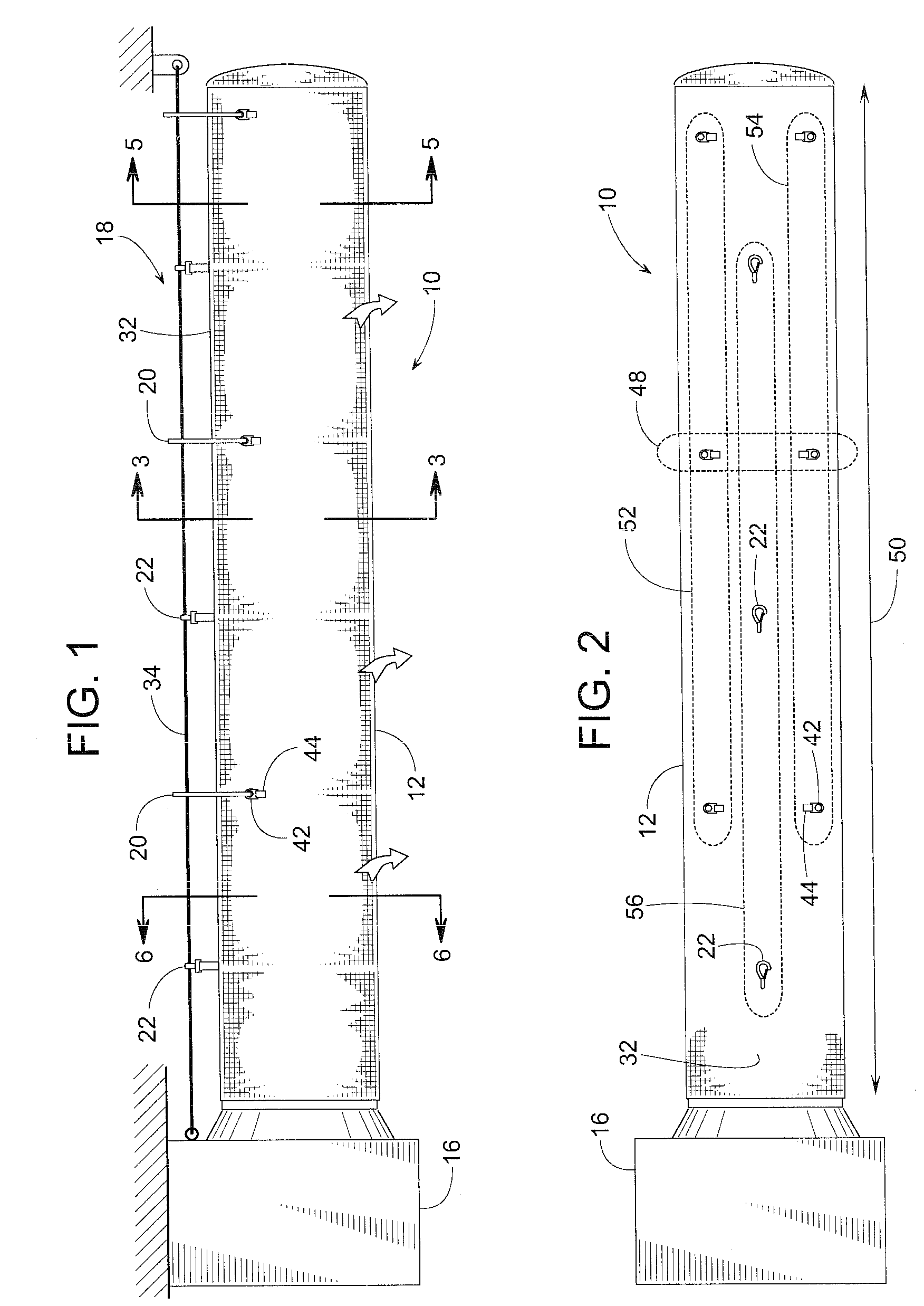External rib cage for an inflatable air duct
a technology of air ducts and rib cages, which is applied in ventilation systems, lighting and heating apparatus, heating types, etc., can solve the problems of metal ducts being damaged, ducts suspended from the roof of buildings, and exposed,
- Summary
- Abstract
- Description
- Claims
- Application Information
AI Technical Summary
Problems solved by technology
Method used
Image
Examples
Embodiment Construction
[0033]Referring to FIGS. 1-6, an HVAC system for heating, ventilating or air conditioning includes an air duct assembly 10 with an inflatable tube 12 made of a pliable material that encloses an air passageway 14. Tube 12 is connected to receive pressurized air from a blower 16 or some other source and distribute that air within a building or wherever the air may be needed. To disperse the air from within the tube's air passageway 14, tube 12 can be made of an air permeable material and / or tube 12 may be provided with a series of holes or air registers.
[0034]For the HVAC system to meet the demand for air, blower 16 can be periodically energized and de-energized as needed. When energized, blower 16 inflates tube 12 to a generally cylindrical shape (or some other closed shape) as shown in FIGS. 1, 3, 5 and 6. Once the need for air has been satisfied, de-energizing blower 16 causes tube 12 to deflate to the shape shown in FIG. 4.
[0035]As tube 12 changes between its inflated and deflated...
PUM
 Login to View More
Login to View More Abstract
Description
Claims
Application Information
 Login to View More
Login to View More - R&D
- Intellectual Property
- Life Sciences
- Materials
- Tech Scout
- Unparalleled Data Quality
- Higher Quality Content
- 60% Fewer Hallucinations
Browse by: Latest US Patents, China's latest patents, Technical Efficacy Thesaurus, Application Domain, Technology Topic, Popular Technical Reports.
© 2025 PatSnap. All rights reserved.Legal|Privacy policy|Modern Slavery Act Transparency Statement|Sitemap|About US| Contact US: help@patsnap.com



